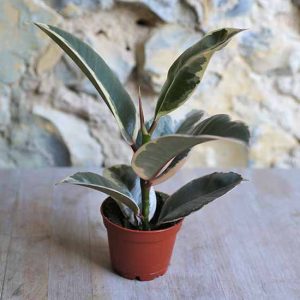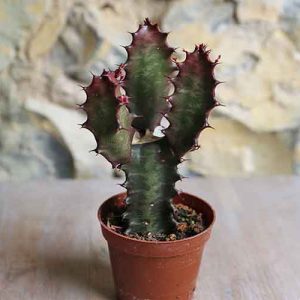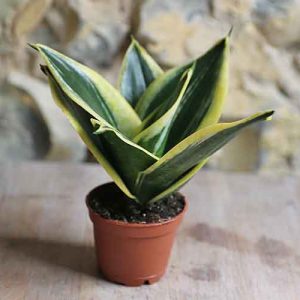HOW TO CARE FOR YOUR FICUS ELASTICA (RUBBER PLANT)
THE RUBBER PLANT
Ficus Elastica AKA Rubber Tree / Rubber Fig / Indian Rubber Bush
The Rubber Plant is the species of ficus most commonly cultivated as a houseplant, largely due to its attractive shiny leaves. Perhaps not a plant for total beginners, Rubber Plants do require a moderate care regimen. Trust us though, they’re absolutely worth it. Whether tucked away in a terrarium, or grown big as a feature piece, these exotic-looking plants can brighten up any room with their abundant tropical foliage.

Where Does It Come From?
The Rubber Plant is native to eastern parts of South Asia and southeast Asia. The species has also become naturalised in Sri Lanka, the West Indies, and Florida. Farmed for the milky white latex in the tree’s stem, this plant has been used by the native peoples of Asia for thousands of years.
Why Should I Get One?
- If you’re looking for a plant that can eventually act as a feature piece in your room, look no further! Looked after well by owners who are willing to frequently upgrade the size of their pots, these Rubber Trees can reach up to 8-feet high – even in the chiller temperatures of a UK household!
- There’s something really satisfying about nurturing a plant from a tiny baby to a full-on mini tree – so if you’re seeking a long-term project, this might be the plant for you.
- Very resistant to pests and excellent at purifying the air – a double whammy!
How Big Can It Grow?
Well, these little babies might look pretty delicate, but in the wild these plants grow into absolutely enormous trees (like 30 metres tall!). Luckily, the crappy weather here in the UK means its pretty easy to keep them under control in a variety of different pot sizes, depending on your needs.
Where Should I Keep It?
The Rubber Plant isn’t overly picky, but do be careful not to place these guys in rooms that are exposed to powerful direct sunlight all day, every day. They prefer bright indirect or partial shade. Humid conditions are usually best for the plants and they will begin to droop and lose leaves if they are left too close to open vents, cold draughts, large windows and doors that open to the outdoors.
Due to the mild irritation that can occur upon contact with the sap of these mini trees, it is also best to keep the plants out of the reach of pets and children.
How Often Should I Water It?
Watering the plant thoroughly once per week should be enough and we also recommend using lukewarm water if possible as these mini trees can be divas about the cold. Cold water on the roots can shock the plants and cause them to shy away from their full growth potential! Rubber Plants hate overwatering though, so be sure to give your plant a drink only when the top couple of inches of soil are completely dried out. Adequate drainage in the pot is really important here as Rubber Plants will get sick and droop if left in oversaturated soil. Yellowing leaves are a tell-tale sign that you’re loving your plant to death with too much hydration. That being said, a moist environment is best for these plants to thrive and they benefit from regular misting during the hot summer months. Water less during the winter and apply a diluted liquid fertiliser every two weeks during the growing season.
Offering striking foliage, gorgeous waxy textures and astounding versatility, however you wish to display your Rubber Tree it’s sure to be a conversation starter in your home. Perfect for usage in terrariums or as a bold piece of interior décor, these plants are a lot of fun.
-
Quick View
 Sold OutSelect options This product has multiple variants. The options may be chosen on the product page quick view
Sold OutSelect options This product has multiple variants. The options may be chosen on the product page quick view -
Quick View
Mini Variegated Rubber Plant or Rubber Tree (Ficus Elastica Tineke)
View All, Mini Terrarium Plants, Baby House Plants £6.00 -
Quick View
Small African Milk Tree (Euphorbia Trigona Rubra)
Baby House Plants, Cacti + Succulents, Mini Terrarium Plants, View All £6.20 -
Quick View
Tiny Birds Nest Snake Plant (Sansevieria Trifasciata Hahnii)
Baby House Plants, Mini Terrarium Plants, View All £6.00



